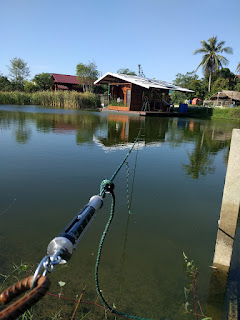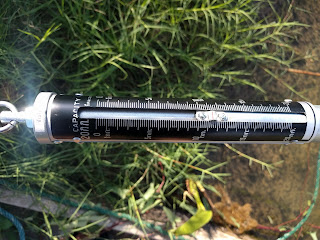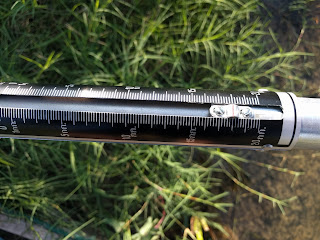We are getting very close to the point on BaanLoiNaam that we will be adding the propulsion systems. To review, the house is designed to be able to operate completely independently from land and to move around the pond under it’s own power and rotate to track the sun, etc.
So before I can spec out the propulsion system, I need to figure out how much wind force may be exerted on the building.
There have been some windy days recently and the workers have taken off for Songkran, so I didn’t feel like I would be interrupting their work if I unmoored the house and started measuring.
Basically, I connected a spring force gauge to a rope holding the house from the upwind direction, tethered the house with perpendicular ropes in the “left” and “right” perpendiculars to the wind direction in order to keep the house under control but apply minimum forces in the parallel-to-wind direction.
Here are some pictures:
The rest of this post is mostly for my own records so if you aren’t interested in the gory details, feel free to quit here. 😉
The actual measurements were much more difficult to take than I expected. First, the wind is constantly changing in speed, and second the wind acting on the house results in a velocity and the force I’m measuring would then include the force to resist the built up inertia rather than just the wind pressure force I intend to measure.
A metaphor for this would be to try to measure how high a car rides off the ground under different numbers of passengers. (The spring gauge acts like the spring on the shock absorber.) But the number of passengers keeps constantly changing from second to second (the wind speed change) and the car is bouncing up and down, and as a result overshoots in both directions.
The other complication is that the total force maxed out the 20kg of the spring gauge quite often. So I will try to buy a 50kg spring gauge and try again.
But the strategy that yielded some results was to have one person stand near the house with a portable anemometer (wind speed meter) and read off the wind speed measurements every second while I sat by the spring gauge trying to manually dampen the overshoots. Over the course of a tiring 20 minutes or more, there were only two readings where the wind speed stayed constant for long enough to stabilize the house motion (about 10-15 seconds).
Here are the two readings:
3.5m/s wind speed resulted in a force reading of about 18kg
2.5m/s wind speed resulted in a force reading of about 10kg
Wind speeds over 4m/s easily resulted in over 20kg force, and wind speeds under 2m/s had very small forces.
So the first sanity check that suggests these readings may be valid comes from the fact that the wind pressure is proportional to the wind speed squared.
If I calculate the constant of that proportionality for the first number, I get 18/3.5² = 1.47. For the second number, I get 10/2.5² = 1.60. These represent about an 8% difference, which is quite close compared to all the rough qualities of my experiment.
The average of these two constants is 1.54, which can be used to approximate wind force for any wind speed of wind that hits the house from this direction. (These winds came from the prevailing wind direction, and the house will generally have the roof with the solar panels pointing generally southward, so this assumption of direction is reasonable.)
For example, the highest wind speed I’ve ever measured on a windy day (when I was looking) was 6.2 m/s. 1.54*6.2² = 59kg force. Since the Blue Robotics T200 ROV thrusters I am tinkering with now only supply 5kg force at max power, this would mean I would need about 12 of these thrusters to be able to resist a wind gust of this speed. And since I would rather not rotate the thrusters when wind speed or boat direction changes, this would mean about 20 thrusters total. (12 on the long sides and 8 on the short sides.)
That’s a lot of thrusters. Not impossible, but more than I was planning. And that is just for the fastest gusts I’ve measured.
I’ll need to seriously consider whether I want to go with something bigger.


